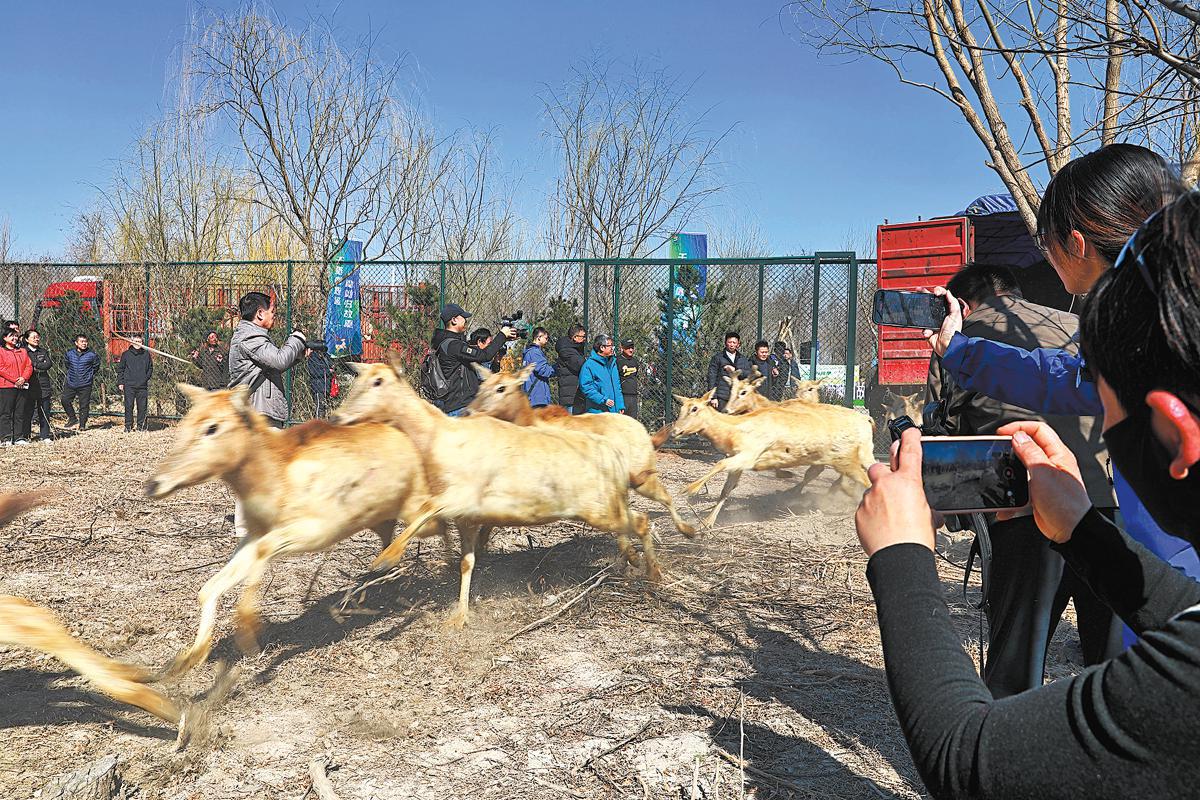Milu deer adapt to new home in Tianjin
Conservation drive attracts species to return and thrive in Qilihai Wetland


Since 2017, a total of 20 billion yuan ($274 million) has been injected to the area to protect the environment, and a major ecological rehabilitation campaign has been launched after moving all the fishing, farming and tourism business projects nearby. "To prepare for the migration of a large number of migratory birds and ensure an adequate food supply, we released 220,000 fish and shrimp fry last year," said Tian Xiujing, director of the Qilihai Wetland Nature Reserve Administrative Committee.
The area has revealed an ambitious plan to build itself not only into a national model for wetland ecological restoration, but an internationally renowned bird habitat, and an international coastal wetland science education base, Tian said.
Last year, large fish such as silver carp and common carp were auctioned for charity, raising nearly 1.8 million yuan, all of which was allocated to wetland ecological protection. The number of bird species has risen from 182 a decade ago to 258 today, and the annual number of birds stopping over has doubled from around 250,000 to nearly 500,000.
Globally near-threatened bird species, such as the Oriental stork, Eurasian spoonbill and reed parrot-bill have returned to Qilihai.
The variety of wild plant species in the wetland has increased to 162.
yangcheng@chinadaily.com.cn
























